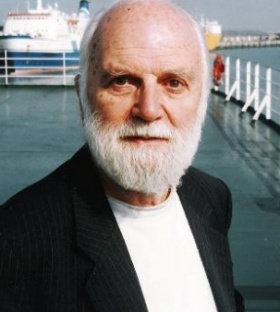I can never experience my body directly – only others can see my body. Nor can I directly experience another’s mind but only their body. However, if I place myself in another’s shoes, so to speak, I imagine the world from their point of view and so come to understand their mind. Their view out, their mind, includes their view of me – of my body. Putting me in another’s shoes is possible because at center we are identical – we are both no-thing. Though the contents are different, the Container is the same. It is when I place myself there at another’s center and then look back at ‘myself’ that I come to know my body and so become self-conscious
You are divine at center, human in appearance – at a certain range. Seeing who you really are doesn’t mean you are no longer aware of your appearance, no longer self-conscious – that’s impossible as well as undesirable. So you still respond to your name, still recognize yourself in the mirror; still take responsibility for your actions. Of course. But you are now aware that your humanity is like a disguise, an incarnation you have taken on to be here in this world. Inwardly you are God; outwardly you are a person – a unique person with a special contribution to make. Instead of thinking you are just that person, that appearance, you are awake to the Power behind you, the Safety within you, the Source of inspiration and guidance at the heart of your human life. This enables you to be yourself even more so.
Life
Birth: Douglas Harding was born in Suffolk, England on 12 February 1909.
Realization: Douglas Harding was brought up in a strict fundamentalist Christian sect. He had an unusual drive for self-inquiry, and he left the sect as a young adult to pursue his own path. Becoming an architect, he moved to India in the mid-1930s to work there. One day Harding stumbled upon a drawing by the Austrian philosopher and physicist Ernst Mach. It was a self-portrait. The obvious thing about this portrait is that it was headless. For Harding this was the key that opened the door to seeing his innermost identity.
Death: Douglas Harding died in Nacton on 11 January 2007.
Teaching Style: His method involves leading subjects in a series of experiments that reverse attention. This allows the subject to enjoy the experience of unity with the universe. Harding have been lecturing and teaching their simple, practical method of direct seeing for oneself for many years. He devoted his life to teaching these exercises, traveling around the globe leading workshops until just before his death in 2007.
Fame: A unique figure in the spiritual world, Douglas Harding was an English mystic, philosopher, and author of many books. He calls his discovery headlessness, which he says is the same as “seeing who you really are.” To accomplish this, he recommends a method of self-inquiry based on simple, practical exercises. His Headless Way offers you a practical, user-friendly way to see who you really are. At the heart of this approach are the Experiments – awareness exercises that guide your attention directly to your deepest identity.
Legacy: Developer of a modern method of meditation Douglas Harding lines up with Maharshi’s view that “There is nothing so simple as being the Self. Thousands upon thousands of people came to see Douglas Harding over the years to experience his unconventional methods of pointing out our true nature.
Teachings
Douglas Harding’s view is that seeing who we really are, the blessed vision is available right now and just as we are, not only after a long, perhaps lifelong preparation.
According to him there is nothing as simple as being the Self. It requires no effort, no aid. All are seeing God always, but they don’t know it. I see what needs to be seen. I see only just what all see, nothing more. The Self is always self-evident.
He told that at several meters, more or less, you are human, but at closer ranges you are cells, molecules, atoms, particles… Viewed from further away your body becomes absorbed into the rest of society, life, the planet, the star, the galaxy… Science’s objective view of you – zooming towards and away from you – reveals a hierarchically organized system of layers that is alive at every level, intelligent and beautiful. Thus you have many layers, like an onion.
According to him one’s central identity, or inmost being, is immediately accessible through direct experience; empty, simple and silent in itself, it contains or manifests all the forms, colors, sounds and complexities of this ever-changing world.

